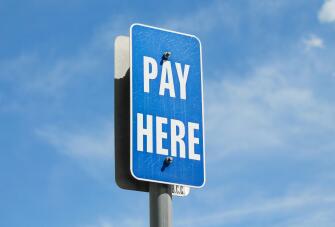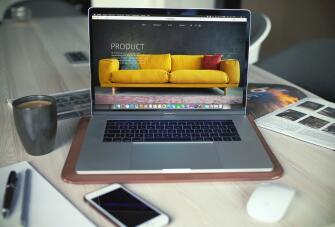Costs Of Goods Sold - COGS Formula For Your Business
If you don’t understand your Cost of Goods Sold, you don’t understand your business. Period.
Every day, businesses fail. Not because they lacked a great product, not because they didn’t have customers, but because they misunderstood the very foundation of their profitability. 82% of businesses fail due to cash flow problems. What sits at the heart of that cash flow? COGS.
Yet, so many business owners treat it like an afterthought, just another number on the income statement. That’s reckless. Your COGS is the single biggest factor that determines whether you're actually making money or just playing business. It decides your pricing strategy, your margins, your operating profit, and ultimately, your survival.
So today, we're going to explain what COGS is, how to control it, optimize it, and use it to transform your business. We’ll break down the COGS formula, real-world applications, and the long-term impact of managing it right. Because the difference between thriving and barely surviving is all in the numbers. Let's get started.
What is the cost of goods sold?
Cost of goods sold is the total direct costs associated with producing the goods that you sell at your company. This includes the cost of raw materials and direct labor costs directly used to create the goods. These are considered variable costs because they fluctuate based on production levels.
Now, this doesn't, however, include indirect expenses like distribution costs or the cost of the technology used (like POS hardware and POS software) to sell this item. These are considered overhead costs.
What’s included in the COGS calculation?
When we talk about the cost of goods sold we're essentially talking about the wholesale price of each item that you sell. This includes:
-
The individual cost of all the parts that are used to build or assemble the products you sell
-
The raw materials needed for the products
-
The cost of each item purchased for resale and/or to make the product
-
The machines or the parts needed to create the product
-
All supplies that are required in the production of the product
-
Shipping parts and all of the equipment used to the warehouse to create the product (we're talking containers, freight, and fuel surcharges)
-
The wages for the people who put the products together and also the people who ship the parts
COGS vs operating expenses
Now there are a lot of different expenses that'll occur in your business operations as a retail business owner. You've got your COGS, which we've spoken about above and you've also got your operating expenses. While they’re both subtracted from your company's total sales, they appear on different financial statements—COGS is recorded on your income statement, while your balance sheet reflects inventory values before and after sales.
When we talk about operating costs we're referring to expenditures that aren't costs directly related to the production of your products. So your:
-
Rent
-
Office supplies
-
Legal costs
-
Sales and marketing
-
Payroll
-
POS system and other technology used
-
Utilities
-
Insurance
Suppose you own a small business fashion boutique that sells handmade items in the heart of the city and want to do a COGS analysis. Your cost of goods sold would be how much the materials for your fabulous clothes are (the thread, the hangers, etc), your salary for making the clothes, and any shipping and storage costs. But, you've also got to pay rent for your shop, your utilities, and marketing costs incurred. These are your operating expenses.
How do you calculate the cost of goods sold?
Now that you have a better understanding of what COGS is, and what it's not, let's learn how to calculate it. To calculate business COGS, you need to follow the below steps.
Identify your indirect vs direct costs
First up you need to figure out your direct costs and your indirect costs, because every product that you sell has both.
Your direct cost is essentially everything that’s directly associated with the product itself, including:
-
Raw material costs or items for resale
-
Cost of stock of the finished products
-
Production costs and supplies
-
Packaging costs and work in process
-
Overhead costs, like your utilities and rent
Then you've got your indirect costs. These are the expenses that aren't directly tied to producing a specific product or service, like:
-
Your labor force, the brilliant people who make the product
-
The equipment that's used to manufacture your items
-
Depreciation costs of the equipment
-
Costs to store the items (containers, warehouses)
-
Any administrative expenses and salaries
-
Non-production equipment
Work out initial inventory
Next, you need to work out your initial inventory (AKA your beginning inventory).
Regardless of if you're selling cupcakes, stylish dresses, or any other goods sold, knowing just how much inventory you're starting off with is really important for calculating the cost of goods sold.
This includes the total value of all products acquired during the fiscal year, ready for sale, which also includes your raw materials, unfinished items, and supplies on hand.
Additionally, any purchases made throughout the year that don't fit into the beginning or ending inventory need to be tracked. These purchases cover all acquisitions, whether through shipments, manufacturing, or other means.
Calculate Year-End Inventory
You now should have a good idea of how much inventory you started off with in the beginning of the year. When the year is complete, you need to then take stock of the remaining inventory. It's time to calculate ending inventory. So, the stock that's left over that you haven't yet sold.
Your ending inventory can be classified into various categories, including items ready for resale, damaged goods (with an estimated value of the damage), worthless products (which require evidence of destruction), and obsolete items (needing evidence of devaluation). For the latter, donating to charities can enhance goodwill and clear out space.
TIP: Check out our step-by-step guide on how to do year-end inventory for your store!
Use the cost of goods sold equation
Your final step, now that you've calculated your beginning inventory and your ending inventory, is to use the cost of goods sold formula to work out this business expense. Here's how you calculate cost of goods sold:
(Beginning Inventory + Purchases) – Ending Inventory = COGS.
TIP: Using a POS system can really streamline this process for you. It can help track sales, business inventory, and purchases, creating detailed and functional reports that make COGS calculations much easier!
Cost of goods sold formula example
Let's say your company has the following inventory data for the calendar year ending on December 31, 2022:
At the beginning of the year, your inventory is valued at $20,000.
By the end of the year, your ending inventory amounts to $6,000.
Throughout the year, your company made purchases totaling $8,000.
To calculate COGS using the formula provided:
($20,000 + $8,000) - $6,000, resulting in a COGS of $22,000.
Payment processing services made simple
Take integrated payments at one fixed rate, with no hidden fees - anywhere, any time.
Why is the cost of goods important for business?
As a retail business owner, knowing the COGS formula is important. Here's why:
COGS effect on gross profit
COGS directly affects your gross profit. It's super important for figuring out just how much moolah you're making on each sale. With COGS, you can see which products are making you the most dough and set prices that make sense. Because, if you know exactly how much it costs to whip up each item, you can make smarter decisions about what to charge.
On top of this, COGS helps you spot where you might be spending too much on production. Once you know that, you can tighten things up and save some cash.
TIP: Discover how to calculate gross profit margin with our helpful guide!
Better expenses management
Managing expenses better means keeping tabs on all the stuff that goes into making and selling your product. That means not just the materials and parts, but also the fixed costs like labor, factory overhead, rent, equipment, and electricity.
These expenses add up and affect how much you make from each sale. By keeping a close eye on them, you can make sure your gross profit stays healthy and that you're pricing your products just right to keep those margins nice and fat.
Inventory management becomes more accurate
When you manage expenses better, you can keep track of your inventory more accurately.
This means knowing exactly what you have in stock and what you need to order. This way, you won't end up with too much stuff sitting around or running out when customers want to buy.
By staying on top of expenses, you avoid wasting money on excess inventory and missing out on sales because you didn't have enough. It's a win-win for your bottom line and your customers' satisfaction.
Helps with tax liability
The IRS gives you a break by letting you subtract the cost of goods you used to make or buy the stuff you sell in your business. By adding up all your business expenses, including COGS, you can balance them against your total revenue when tax season rolls around.
This way, you only pay taxes on what's left after you've covered your costs. It's like trimming the fat off your tax bill, so you owe less when it's time to settle up with Uncle Sam.
It's important to note that, while high COGS means that you'll have a lower income tax, that's not ideal, because it basically also means lower profitability for your company.
COGS accounting methods
Whoever helps you out with your taxes should give you the advice you need on the best inventory accounting method to use for your business. There are three that are super popular though, these are:
-
Weighted average cost
-
First in, first out
-
Last in, first out
Here's an overlook at all three:
Weighted average cost method
Your weighted average cost is a popular inventory valuation method that uses a weighted average to work out how much money goes into COGS and inventory.
Here, the average price of all products that you have in stock is used to value the goods sold, regardless of date of purchase. It’s a great method for mass-produced items.
For example, if you have:
-
200 units at $5 per item
-
100 units at $6 per item
-
150 units at $5.50 item
Your total inventory would amount to $2,425.
To figure out your average cost per unit you'd divide the total inventory ($2,425) by the total number of units (450). So it works out to $5.39 per unit.
First in, First Out
Your first in, first out (or FIFO) is where the assets produced or purchased first are sold to customers first. This is best if your business sells perishables, like food, and also products that have a short shelf life.
Say you own a food truck business. With FIFO, you'd sell the burgers, fries, and drinks you made or bought first before the newer ones. This way, you're always serving up the freshest food to your customers and none of your ingredients would go off.
Last in, first out
Now this is the exact opposite of your FIFO. Your Last in first out ( or your LIFO for short) assumes that the products you bought or made last are the first items you sold. So, when prices rise, you're selling items with the highest costs first, which means your ending inventory costs show lower values. As a result, your net income decreases.
Using the example mentioned earlier, let's see how LIFO works. For the first order, your Cost of Goods Sold (COGS) would be $5.50 because you sold unit Z first, which you bought last. Then, for the second order, your COGS would be $6 because the next unit you sold was Y, which you purchased after Z.
In times of inflation, LIFO results in a higher reported Cost of Goods Sold (COGS) on your financial statements and lower taxable income.
How Epos Now accounting solutions can help with tax preparation
Epos Now has partnered with some of the biggest bookkeeping and accounting integrations globally, empowering customers to take control of their accounting effortlessly.
It offers a lot of benefits:
-
Save time: Manual data entry is tedious and eats up valuable time. Integrating your accounts automates the process, pulling end-of-day figures directly into your bookkeeping software (also known as accounting software), freeing you to focus on core tasks.
-
Save money: Sending heaps of paperwork to your accountant every year-end racks up costs. An automated accounts module streamlines data, reducing your accountant's workload and ultimately saving your business money.
-
Eliminate human errors: Manual data entry is prone to mistakes, potentially damaging your business. By automating this process, you mitigate the risk of costly errors.
Here are some of the third-party accounting software apps that you can seamlessly integrate into your POS system and help with financial planning:
-
DAVO Sales Tax: DAVO automatically sets aside sales tax daily using sales data from Epos Now and files and pays the state for you.
-
Sage: Ideal for startups and small businesses, Sage One simplifies finance management, ensuring compliance with payroll legislation.
-
QuickBooks: A global leader in online accountancy, QuickBooks offers invoicing, receipt management, and business reports, seamlessly integrated with Epos Now.
TIP: Check out our guide on integrating accounts with your POS for all the details you need!
FAQs about the cost of sales
- Is COGS an expense?
-
Yes! COGS (Cost of Goods Sold) is classified as an expense because it represents the direct costs of making or purchasing the products you sell. For tax purposes, businesses can deduct COGS from their revenue to determine taxable income, which helps lower their overall tax liability. You’ll find COGS listed on a company’s income statement, right below revenue, as it’s crucial for calculating operating profit.
- What is another name for cost of goods sold?
-
COGS is also known as "cost of sales." These terms are often used interchangeably, but some businesses use "cost of sales" when referring to both products and service companies, while "cost of goods sold" is more common for businesses that sell physical products.
- What is COGS in accounting?
-
In accounting principles, COGS refers to the total direct costs involved in producing or purchasing the goods a business sells. This includes raw materials, direct labor, and any cash discounts received on inventory purchases. Since COGS is deducted from revenue on a company’s income statement, it plays a critical role in determining operating profit, the amount a business earns after covering all direct costs.
- Are COGS and operating expenses the same thing?
-
No! COGS covers variable costs, such as materials and direct labor, while operating expenses (OPEX) include fixed costs like rent, utilities, and administrative salaries. Since operating expenses don’t fluctuate based on sales volume, businesses must manage both efficiently to maximize operating profit.




